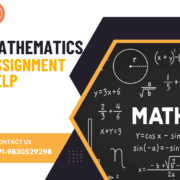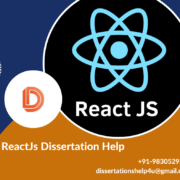CSS Assignment Help
CSS Assignment Help
CSS, the unsung hero of the web, transforms bland HTML skeletons into stunning, interactive masterpieces. But mastering its intricacies can feel like deciphering an ancient text – especially when faced with looming deadlines and complex assignments. Fear not, aspiring web artists! Dissertationshelp4u is here to be your CSS sensei, guiding you from drab to fab with expert help and a dash of creative magic. Let’s read our blog “CSS Assignment Help“.
Why CSS Matters:
CSS isn’t just about making websites pretty (although it’s really good at that). It’s about breathing life into your digital creations. From setting fonts and colors to crafting layouts and animations, CSS empowers you to tell your story through visual language. But navigating its myriad properties, selectors, and media queries can be overwhelming. That’s where Dissertationshelp4u steps in.
We Get Your CSS Struggles:
Our team of CSS wizards has faced every selector beast and media query monster in the book. We understand your pain points, whether you’re:
- Lost in a sea of declarations: We’ll break down the syntax into manageable chunks, making those curly braces your new best friends.
- Stuck in layout limbo: Whether it’s a responsive nightmare or a sticky footer giving you grief, we’ll show you the CSS tricks to tame those layout demons.
- Drowning in pseudo-classes and pseudo-elements: Don’t let the “pseudo” scare you! We’ll make even the most advanced selectors your allies.
- Yearning for animation magic: Breathe life into your website with stunning CSS animations. We’ll guide you through the process, frame by frame.
Beyond Fixing Code:
Dissertationshelp4u doesn’t just fix code; we build confidence and unlock your creative potential. We offer:
- Personalized tutoring: We tailor our approach to your learning style and pace, ensuring you grasp the concepts, not just memorize the code.
- Project-based learning: Want to build a dynamic portfolio website or a captivating landing page? We’ll guide you through real-world projects, making learning practical and fun.
- Unlimited revisions: We’re not satisfied until you are! We’ll keep refining your code until it shines, ensuring you submit work you’re proud of.
- 100% plagiarism-free and confidential: Your originality and privacy are our top priorities. We guarantee every line of code is yours, and yours alone.
Stop Stressing, Start Styling:
Your CSS assignment isn’t just a grade; it’s a stepping stone to a future of web design mastery. With Dissertationshelp4u by your side, you can ditch the frustration and unleash your inner digital artist. Build websites that captivate, engage, and tell your unique story. Remember, a well-styled website is more than just pixels on a screen; it’s a powerful communication tool.
Thank you for read our blog ”CSS Assignment Help”. I hope this blog is helpful to you, if you have any question feel free Call / WhatsApp: +91-9830529298 || Email: dissertationshelp4u@gmail.com.
Also read our more BLOG here.
Latest Blog
- R Studio Assignment Help
ReactJs Dissertation Help - MATLAB Dissertation Help
- Python Assignment Help
- Finance dissertation Help
- Cybersecurity Dissertation Help
- HTML Assignment Help
Visit our another website EDUHELP CENTRAL for various educational information like University Application, Exam Preparation, Abroad Studies, Digital Marketing services etc.
Don’t let code roadblocks dim your creative light. Contact Dissertationshelp4u today and let’s paint the web with stunning CSS together!
Remember, Dissertationshelp4u – your CSS companion, ready to transform your assignments into web design masterpieces!
#CSS , #dissertation, #blog, #academic, #education, #Professional, #Assignment














